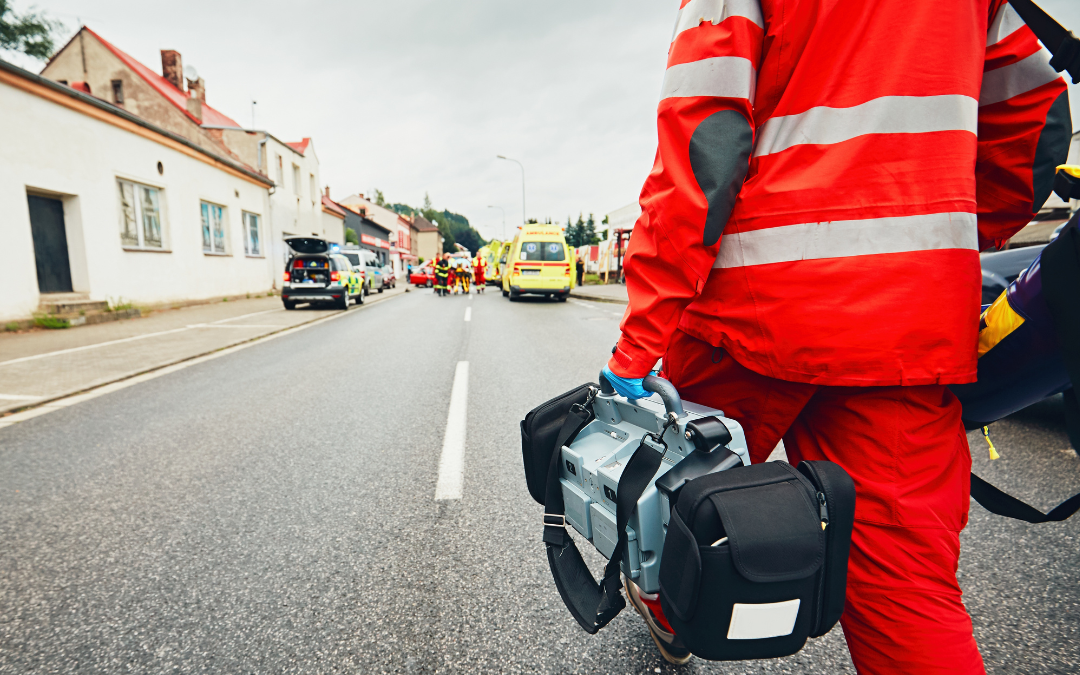
Businesses form a critical part of the community’s economic fabric, providing jobs, goods, and services that keep society functioning smoothly. Yet, like any other entity, businesses are not immune to disasters, be it natural calamities such as floods and earthquakes, or man-made incidents like fires and terrorist attacks.
Having solid emergency preparedness strategies can help businesses withstand shocks, safeguard employees, protect assets, and ensure continuity of operations. This article provides insights into strategic preparation for emergencies, focusing on response and recovery phases.
Emergency Response Strategies
1. Activate Your Emergency Response Plan
Your Emergency Response Plan (ERP) is your guide in a crisis. It should include protocols for different types of emergencies that your business might face, based on a comprehensive risk assessment. The plan should clearly define roles and responsibilities, and outline steps for protecting employees and minimizing damage to assets. Immediately activating the ERP ensures a coordinated and effective response, which can help reduce chaos and confusion. It also provides a structured approach to decision-making during high-stress situations.
2. Clear Communication
During emergencies, clear communication is key. Quick and precise details can help control fear and disarray among employees. It will also help guide them about the necessary steps to take. Frequent updates also need to be cascaded to concerned parties, first responders, and local authorities. Make full use of all possible communication platforms – including emails, messaging apps, social media, and emergency alert systems. Additionally, it is essential to appoint a representative to handle media questions and control the dissemination of information.
3. Secure your premises
Various emergencies call for distinct safety measures to protect your property. For instance, if faced with a fire, immediate evacuation is essential, while a security breach might require a lockdown. Clear signage indicating exit paths, established lockdown protocols, and emergency apparatus such as fire extinguishers should be incorporated into your Emergency Response Plan (ERP). After an emergency, a comprehensive inspection for potential safety risks should be conducted before permitting employee re-entry. The safeguarding of data and confidential information should also be a priority, including the implementation of backup and encryption strategies.
4. Employee Safety Comes First
Your employees are your greatest resource and protecting their safety during emergencies should be your primary concern. An effectively implemented Emergency Response Plan (ERP) should ensure everyone’s safety. During high-stress situations, employees might require emotional support, so the provision of counseling or psychological help should be considered. Immediate medical help should be given in case of injuries. It is vital to inform employees about actions taken after the emergency and ensure they are comfortable returning to work.
5. Liaise with Local Officials
Interaction with local emergency services and officials can massively improve your crisis management. They offer professional knowledge and supplies to handle emergencies and can supply essential advice. Adhering strictly to their direction can guarantee the safety of your workers and premises. Providing them with crucial details can enhance their emergency actions. Furthermore, establish a connection with these officials prior to any disaster to encourage seamless teamwork during times of crisis.
Emergency Recovery Strategies
1. Implement Your Business Continuity Plan
Your Business Continuity Plan (BCP) serves as a guide to resuming operations after a crisis. Its focus should be on restoring crucial business functions quickly, considering factors such as their significance to operations, interdependencies, and the resources at disposal. Putting your BCP into action allows for an organized and methodical recovery process. Effective BCPs should also account for alternative arrangements like backup resources, alternative suppliers, and the provision for working remotely. Regular and successful execution of the BCP can reduce operational disruptions and financial harm.
2. Evaluate the Impact
When safety is assured, carry out an exhaustive evaluation of the harms inflicted by the crisis. This evaluation should cover physical damages to the property and belongings as well as any data loss or operational disruptions. Recording the details of the damage is vital for making insurance claims and for devising the recuperation strategy. If necessary, seek expert assistance to guarantee that the evaluation is comprehensive and precise. This stage also allows for the recognition of any possible hazards that may trigger upcoming crises.
3. Prioritize Recovery Tasks
Not all business functions can be resumed at once, so it’s necessary to prioritize. Critical functions that directly affect your operations, or are essential for serving your customers, should be resumed first. Prioritization should also consider dependencies between different functions. The prioritized list of recovery tasks should be communicated to all relevant teams, and resources should be allocated accordingly. This approach can help manage the recovery process effectively and reduce its impact on your operations and customers.
4. Maintain Open Communication with Stakeholders
Consistent and clear communication with stakeholders can foster trust during times of recovery. Make sure to update your employees, customers, suppliers, and investors regarding the emergency’s effects, the measures in place for recovery, and anticipated timeframes. Candid communication aids in managing anticipations and instilling confidence in stakeholders. In addition, routine updates present an opportunity to express gratitude to all for their endurance and support during challenging times. Leverage different platforms such as emails, social media, and corporate websites to effectively communicate with your audience.
5. Review and Learn from the Experience
Once the recovery is complete, take the time to review and learn from the experience. This should involve analyzing the effectiveness of your ERP and BCP, and identifying gaps and areas for improvement. This learning can then be incorporated into your plans, to enhance your preparedness for future emergencies. Regular training sessions should be conducted based on the updated plans. This review process is critical for continuous learning and improvement, and for building a resilient organization.
Need help in rolling out emergency preparedness plan for your business? Let us help you. Email us at info@leadsresources.com to get started.